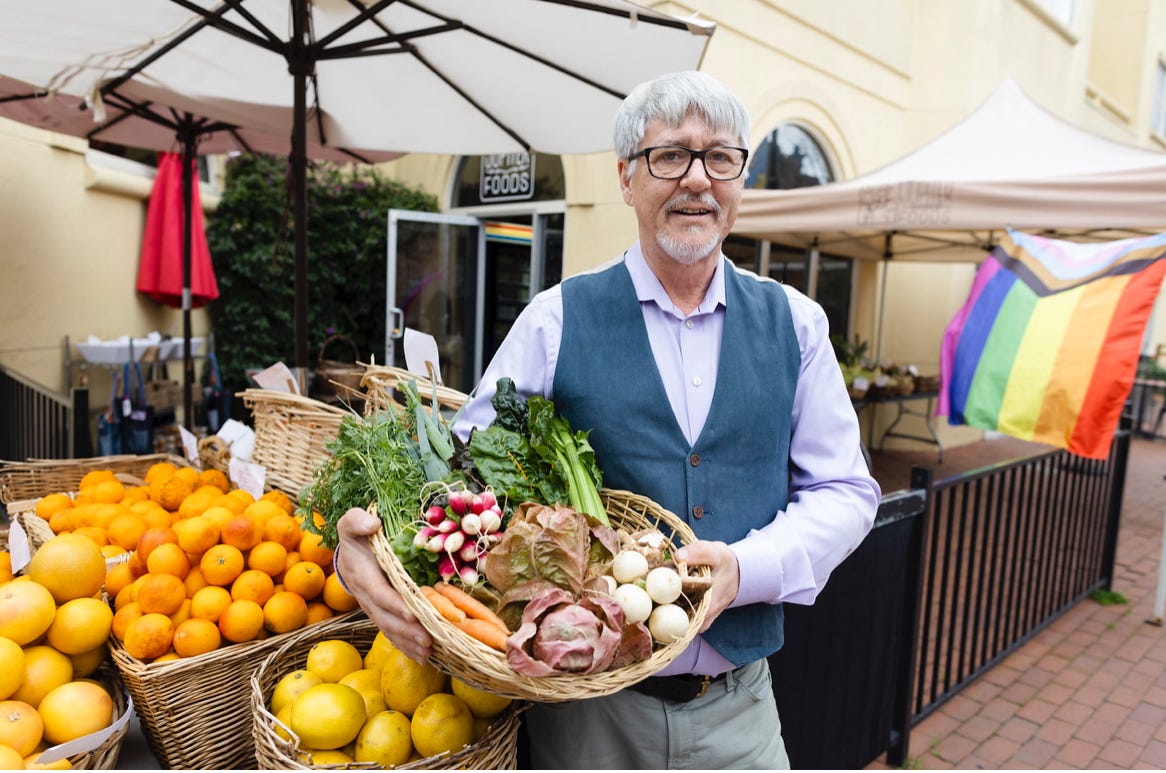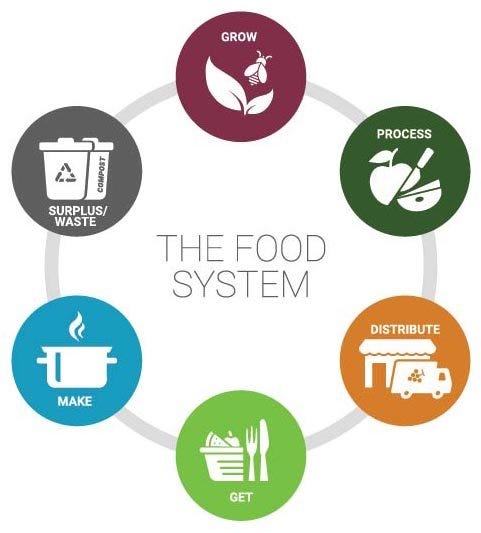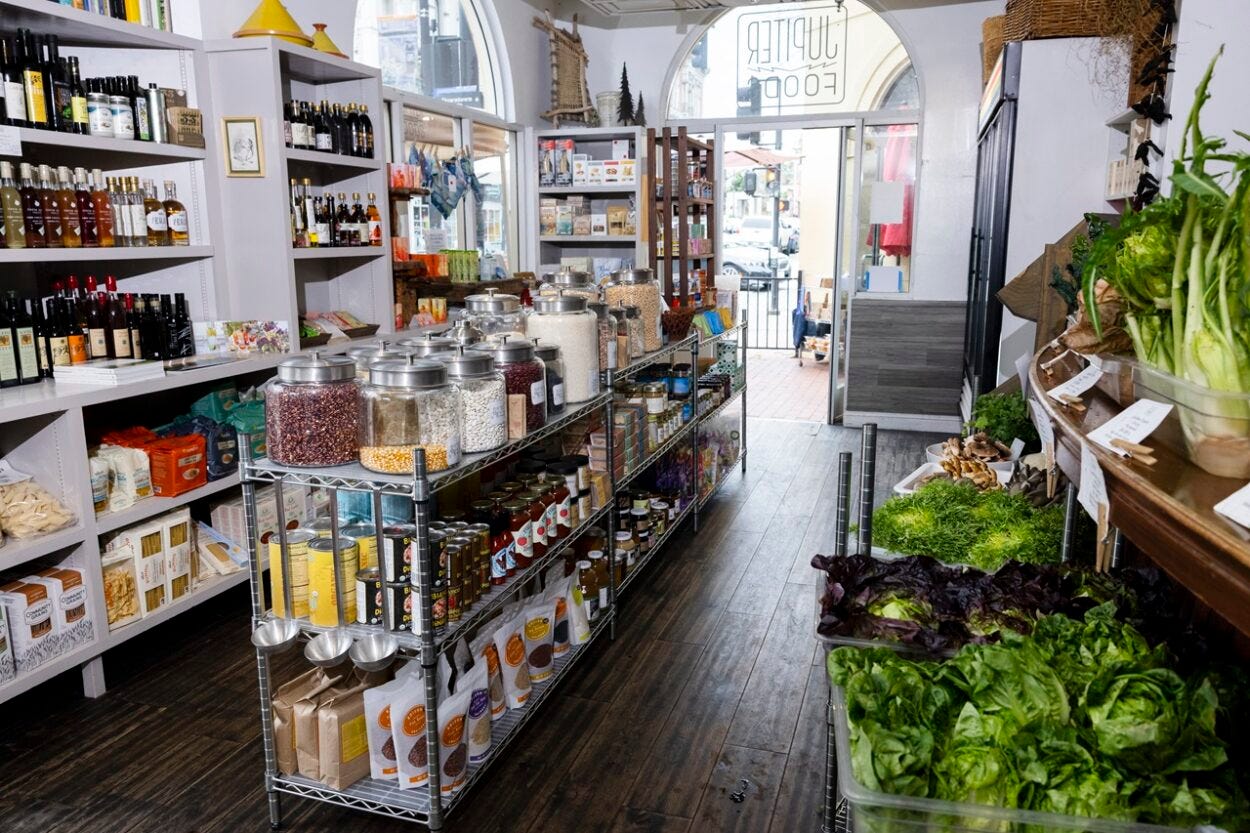Making an Impact
If you and I were living a couple of centuries ago, most of our time would have been spent attending to the needs of our families and communities - growing and cultivating, hunting, feeding livestock, cooking, etc. We might have been concerned over who was our local sheriff or mayor, but wouldn’t have devoted much time or interest in larger, global affairs.
Empowerment came from producing what you needed to sustain your family’s needs using your own hands.
So now that we operate on a much larger global scale, how do we respond when events impact us but are outside of our control? Years ago, Steven Covey wrote about the Circle of Concern vs. the Circle of Influence, a model about focusing our attention on matters we have the ability to change. I sense that many people today are in a pattern of unproductive reactivity or hand-wringing. If so, how can they regain their sense of agency, and spend their time and efforts more fruitfully?
One way to approach this conundrum is to seek out ways to positively impact our own families and communities. A good starting place is to look at models.
What are some examples of actions others are taking to make a real difference?
With that in mind, this will be the first of a series of posts I plan to publish called “Making an Impact.” I’ll be showing you some stories of people who have inspired me in the way they are taking positive steps to make a difference in the world today. You may consider it my version of JFK’s Profiles in Courage, Bush’s Thousand Points of Light or Krasinski’s Some Good News!

We Know Your Farmer
My friend Dan Bleakney-Formby owns an organic community-based grocery store in Petaluma, California called Jupiter Foods. The produce he sells is all organic, grown locally, and sustainably farmed. When you go into his store, you’ll see signs that tell you which farm grew it and where, so customers know what they purchase hasn’t gone through umpteen hands, isn’t full of harmful preservatives, and is not far from the soil where it was harvested.
A short supply chain from the farmer to Jupiter means getting food that was often harvested that morning. Dan is very selective about the farmers he works with, and yes, he knows them personally, so you know all the food is of the highest quality.
Where does your traditional grocery store food come from? Typically, there is a grower who harvests the food using machinery, which is then sent to factories for processing, transported over distances requiring intricate storage systems that require preservation through chemicals or refrigeration, packaged and then sold through various wholesalers, retailers or restaurants.
Whatever gets added to the product to make sure it gets to you before it spoils goes into your body. You’ve heard the phrase, “you are what you eat.” What is more important than supplying your body with fresh, healthy ingredients not loaded with preservatives or who knows what?
I asked Dan why he decided to focus on this particular passion.
“It goes back to growing up on an Iowa farm, and how things were when I was a kid. The way farming was done has completely disintegrated since then.”
“How do you mean?” I asked.
“After the farm crisis in the eighties, everything changed,” he said. “Every farmer realized they had to either get big or go out of business. We used to grow alfalfa and oats for the animals, which the animals then turned into manure and then gets turned into fertilizer. Now they only grow two crops: corn and soybeans. After the crisis, the first thing to go were the animals - there was no time or money to take care of them. Plus every inch of the property was needed for growing crops, so the barn, storage and animals had to go.”
Iowa is the nation’s largest provider of corn and the second largest supplier of soybeans, The bulk of Iowa’s corn and soybean crops are sold overseas to China and Mexico.
“So I guess they had to adapt to continue to function?”
“Exactly. The mass-produced monoculture these days doesn’t allow for the ecology of the organism to develop as it was originally intended. With combines doing the harvesting, they kick out silage to try to return to the soil what the animals did organically, but that traditional manner of farming is over.”
Whatever gets added to the product to make sure it gets to you before it spoils goes into your body.
“So why did you pick the name Jupiter Foods?”
“It was named after the five and dime store where I spent a lot of time as a kid.” Jupiter Discount Stores were an offshoot of S.S. Kresge’s K-Mart brand back in the sixties and seventies. “It’s also because when I was starting to launch the store, there was some celestial event at the time, where all the planets were in some pattern. And then, after my stepmom died, I found a box in the attic filled with stuff from the Jupiter five and dime. So that cinched it.”
Knowing Dan, I can share he also has an interest in retro robot figures, so there’s likely also a Jupiter connection there! 🤖
“How do you find the goods you sell in your store?”
“I go out into the community. The store is closed on Sundays and Tuesdays, which are when I go throughout the Bay Area to meet with farmers. Tuesdays in particular are a rendezvous day in the East Bay. Most of the buyers who go there are chefs. For example, this last week, I could see my order and the order for Chez Panisse next to each other.”
“That’s interesting - it hadn’t occurred to me that chefs are that selective about their ingredients.”
“The best chefs are - quality food is their livelihood.”
“Yours too!”
“Absolutely.”
“Several times when I’ve gone into the store, I see you giving out samples of various products for customers to try.”
“Yes, especially with pantry items like vinegars, oils, or elixirs, I’ll sometimes let customers try it - almost every time they walk out with an order.”
“That was true for us - you let us try the Shoyu and we left with at least two bottles.”
“Do you use it?”
“All the time.”
“Wonderful. We also have vendor demos in the store - in a couple of weeks I have a chocolate tasting from Recchiuti at the store.”
“That sounds amazing.”
“We also have Uproot coming in - they make a ginger/turmeric elixir bottled in Petaluma and grown in Hawaii. Also Nobunaga, a Japanese curry cheddar and apple-flavored popcorn.”
“That’s quite a variety.”
“With our small space, we only make space for the best products.”
“I can vouch for that.”
Dan’s downtown store, at the corner of Petaluma Boulevard North and Water Street, is a constant hub of activity. Every time my wife and I go to shop there, people from the community wander in to chat with Dan, ask him about how best to prepare meals, and share hugs and laughter. Through his engaging manner with customers, and his unsurpassed knowledge about fruits, vegetables and the highest quality ingredients, he is changing the way his community shops and eats.
The Jungle
“I wish I could have a chicken that tastes like chicken.” - Robert Bleakney (Dan’s Dad)
In 1906, after working at the Union Stock Yards in Chicago, journalist Upton Sinclair published The Jungle, a novel set in a meatpacking facility. In it, he tells the story of Lithuanian immigrants who are exploited by their employer, while working in unsanitary conditions. His book caught the attention of President Teddy Roosevelt, who sent in teams to investigate, leading to the establishment of the Meat Inspection Act and eventually what is now known as the US Food and Drug Administration.
While pleased with the book’s success, Sinclair was disappointed that he had intended to draw the public’s ire more toward working conditions than food safety. He stated later that his book became famous "not because the public cared anything about the workers, but simply because the public did not want to eat tubercular beef."
“They use everything about the hog except the squeal.”
― Upton Sinclair, The Jungle
Fair enough. But to get food efficiently from harvest to our plates, how much of a sacrifice to our health do we want to take? At what point are there so many harmful chemicals in a product that a person says, “enough”?
Over the years, food safety standards have evolved, but not without a lot of controversy over issues like creating genetically modified organisms (GMOs), which are prohibited in organic products and involve altering an organism’s DNA.
I asked Dan about the impact of GMOs, particularly in light of the fact the FDA regulates, but doesn’t prohibit their use. Why is that?
“First, it’s important to realize that chemicals are typically used in combination with GMOs. When I was a kid, my Dad used to handle chemicals like RoundUp with his bare hands. A lot of farmers did. Now they use GMOs in concert with chemicals to do what he used to do.”
“So how do we know if GMOs are harmful?”
“The problem is that it’s too early to tell. We know that there are more modern ailments in our society, like increased intolerance to gluten, as well as changes in many people’s gastrointestinal and reproductive systems.”
“I see, so we won’t know until the effects are evident.”
“Exactly. Generational changes may not show in the parent, but will be passed onto their offspring.” He suggested I look up Vandana Shiva, one of the activists involved in the anti-GMO movement to further grasp the potential issues with long-term usage of GMOs. I’m sharing the link above so you can research if interested.
“How do they use GMOs now? I’m trying to understand what happens exactly.”
“Instead of using pesticides, they modify the crops genetically to make the stomachs of insects explode if they eat it.” He pointed to the example of the GMO product Bt-corn. The University of Kentucky describes what happens after the insect ingests it: “Within minutes, the protein binds to the gut wall and the insect stops feeding. Within hours, the gut wall breaks down and normal gut bacteria invade the body cavity. The insect dies of septicaemia as bacteria multiply in the blood.”
“So whatever is in the corn that kills the insects is something we ingest.”
“Yes. We’re all eating it in some manner - you can’t avoid it. For example, wheat crops are sprayed with RoundUp to quicken the process of ripening, so it’s ready to harvest all at once, with the expectation the residual chemical is burned off.”
Sustainable food systems
So what do we mean by a food system? When we buy from a traditional chain grocery store, it has been grown, harvested, processed, marketed, packaged and displayed through a series of distribution channels, often over great distances, using economies of scale to help you to be able to afford to buy it. That means the process of getting it to you cheaply is prioritized over quality.

What does it mean to eat sustainably? According to the Harvard TH Chan School of Public Health, “sustainable diets are those diets with low environmental impacts that contribute to food and nutrition security and to healthy life for present and future generations.”
So then, how can one act in a manner that supports better food systems, while eating food that is healthy? When one thinks of eating healthier, many think that means becoming a vegetarian or vegan, but is that necessary? No. Just as with produce, most communities have local butchers where you can buy quality locally-sourced meat. While Dan just started selling a few cuts of beef now, he also has good relationships with butchers from whom you can buy sustainable, locally-sourced meat.
“How do people find stores like yours in their own communities?” I asked Dan.
“Many have farmers markets or farmstands they can seek out. They may be surprised to find a small produce stand or market in their towns. One way is to find any that might have met the “Snail of Approval” standard.”
“What is that?”
“It’s kind of like a Michelin Star. It’s a global seal of quality of slow foods, given by FoodFlo International. We were just awarded ours!”
“Are you making this up?”
“No, I swear.”
“Are there many of those given out?”
“No, they are pretty selective, although there are a good number of them in Sonoma County. Not a lot in the midwest, and none in Iowa.”
While the Snail of Approval is a gold standard, in researching this on my own, I found there are a number of online resources to find local organic grocers. Perhaps your community has a weekly farmer’s market. I found even in rural Maine there are plenty of local organic grocers and butchers if you seek them out.
“The season dictates to us rather than us trying to dictate what product we want outside of season.” - Dan Bleakney-Formby

Bringing it home
I feel like a late comer to this particular conclusion about foods. I can’t tell you how many times I’ve found myself glassy-eyed listening to someone talk about being a vegan, or or having someone explain some complicated way of preparing tofu and beans when my body craves something more substantial to eat, and soon.
But when I think about putting into my mouth food that has been injected with chemicals that kill insects, or buying poultry that was raised jammed into feces-filled crates, I have to pause.
Like you, I love the convenience of buying at my regular grocery store because I’m hooked on comfort and ease and don’t always want to make eating more of a chore than it needs to be. But, there are little things you and I can do. It’s not always about either making massive changes or nothing. Little alternations to the way we buy and consume our foods is the objective. And that’s what Dan is doing - putting his time and money where his mouth is.
As for my wife and I, we make it a point to go over to his store as often as we can. And, influenced by him and my neighbor Don, I built and planted my own garden out front in my own yard - here are some of the results!
So, here’s to healthier, more sustainable, and better-tasting eating. And thank you, Dan, for sharing your passion with your community, and all of us.
~ G






Great article/interview with Dan!
Thanks for informing me on ways we can do better in how we support local farmers, buyers, sellers of organic produce, and more. Love the garden!